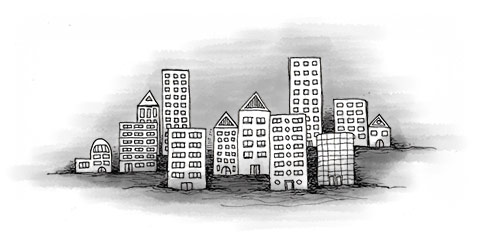Quito
Quito is a city of two halves - powerful suited and booted executives stroll alongside poverty-stricken indigenous shoe shine boys in a place where desperate inequalities are glaringly obvious. As an expat, this is something you will need to get used to all over Ecuador - though in Quito the disparity is especially stark.
Quito contains a mixture of very distinct neighbourhoods. The centre is mostly divided between the beautiful historic centre (one of the first places to be named a UNESCO World Heritage Site in 1978) and the much more modern Mariscal. While Quito’s old town is a wonderfully preserved example of Spanish colonial architecture, the options for renting in this part of town are severely limited. Add to that the lack of amenities in the area, and it’s difficult to recommend as an area for living in. While the Mariscal has plenty of modern attractions - it’s the city’s main centre for international hotels and bars - most expats find it a little rowdy for living in. The area around the Mariscal, north of the centre, is more upscale and is where you’ll find many of the city’s tidier apartment blocks. Similarly, La Floresta, to the east of La Mariscal, is an affluent area with newly built high-rise condos and apartments for rent as well as all the necessary amenities.
Elsewhere in Ecuador
Guayaquil is Ecuador’s economic powerhouse and has a correspondingly large population of 2.3 million, over half a million more than Quito. Its reputation as a seedy and dangerous port city is fading as massive urban renewal projects seek to put a new face on this pacific coastal metropolis. Don’t let Guayaquil’s old reputation put you off living here - it’s far safer than it used to be, and is a place very much on the up. In many ways, it’s Quito’s polar opposite - blisteringly hot, flat and populated not by indigenous Andean peoples, but by a vibrant mix of mestizo, mulatto and black coastal Ecuadorians.
If your budget allows, the exclusive district of Samborondon offers gated communities, huge shopping centres and safety, but is expensive even for expats. Other upmarket areas include Los Ceibos and the more distant Salinas - effectively a city in it’s own right. In Guayaquil’s centre, the most developed areas are found around the Malecón, where you’ll also find a wealth of amenities.
Though prices have risen, Cuenca continues to draw new expats, mostly from the United States. Despite this, rental prices remain low even in the beautiful city centre, and there are lots of fellow expats in the area.
More rural options include the cloud forests around Quito, with towns like Mindo offering real tranquility and plenty for nature lovers. The areas around Cotopaxi National Park offer stunning views and seclusion. It’s possible to rent in these areas, but bear in mind the market will be more directed at buyers.

